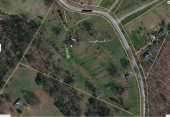Erica and Ernie,
I can not thank you enough for responding!
To give you a better idea of the property the land is multilevel. Up above us we have a steep mountain then a smaller 2000 sqft area half circle coming out completely level (this is where we plan to build). From there it drops about 10-15 feet to a lower level, then drops 6 feet to a lower level and then to an even lower level where the creek runs.
I was thinking last night about running a separate trench from the very bottom of the steep mountain (the part that meets the land where we want to build) and having it wrap around the steeper mountain and diverting it to my medicinal herb garden to help water ect. Then of course having a separate trench for the house (curtain trench too). Are there any flaws in that thinking? Would it eat away the trench since it would be a drastic change? The runoff isn't fast, but I do understand the strength of water. What do you think?
We have natural sand, small rocks to large rocks. Do you think it would be okay to use large piping and fill in with medium sized rocks instead of gravel?
Also are there any other tips you can think of?
We helped build a cob house this past summer and periodically have gone back to help plaster ect, but in my short life I have realized experience is priceless, however I am very young and wisdom is something I have yet to acquire.
Yes as beautiful as a hobbit house may be, we opted out of doing that with cob

We were thinking it would be fun to reuse an old shipping container though!
Thank you so much,
Joelle














 We were thinking it would be fun to reuse an old shipping container though!
We were thinking it would be fun to reuse an old shipping container though! 














